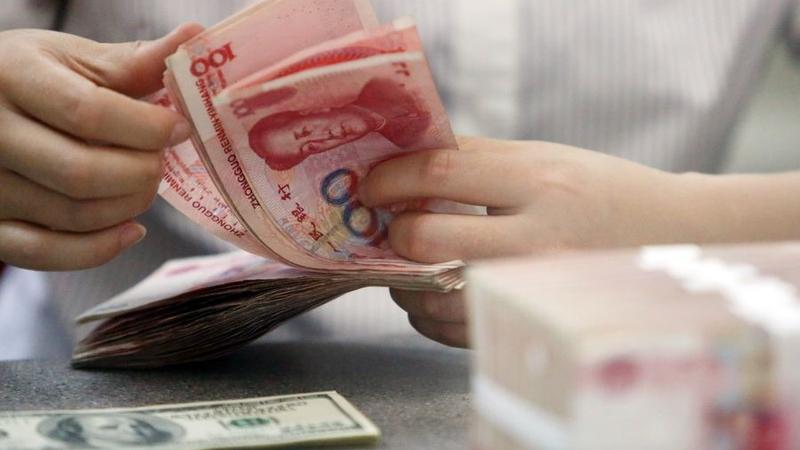 This undated photo shows a worker counting Chinese currency renminbi at a bank in Linyi, East China's Shandong province. (PHOTO / XINHUA)
This undated photo shows a worker counting Chinese currency renminbi at a bank in Linyi, East China's Shandong province. (PHOTO / XINHUA)
Internationalization of the renminbi, also known as the yuan, has been advancing steadily, with an increasing share in global payments as solid proof of the phenomenon, said experts.
According to data updated by global financial messaging services provider Society for Worldwide Interbank Financial Telecommunication (SWIFT) on Wednesday, the yuan's share in global payments stood at 3.06 percent in July, up from 2.77 percent a month earlier. It is the second time on record that the Chinese currency has stood above the 3-percent level. Its share reached 3.2 percent in January 2022.
In July, the renminbi retained its position as the fifth most active currency for global payments for the 18th consecutive month, SWIFT said.
Meanwhile, an increase could be seen in the yuan's share as a global currency in the trade financing market, up from 4.2 percent in June to 4.57 percent last month.
In terms of foreign exchange spot transactions worldwide, the yuan ranked as the fifth most frequently exchanged currency for the third consecutive month in July, SWIFT added. The fifth position was taken by the Canadian dollar in April, when the renminbi ranked sixth.
Wang Youxin, a senior researcher from Bank of China, said that the yuan has gained increasing recognition among international investors in terms of global payments, investment, financing, foreign exchange trade and international reserve utilization. The trend has been especially noticeable over the past 12 months, as the yuan's weight in the International Monetary Fund's Special Drawing Rights basket currency was raised from 10.92 percent to 12.28 percent last August.
The yuan's more frequent use in cross-border trade and investment over the past few months has also facilitated the internationalization of the Chinese currency, according to the second-quarter monetary policy report released by the People's Bank of China, the country's central bank, on Aug 17.
In the first half, the total value of cross-border renminbi payments surged 20 percent year-on-year to 24.5 trillion yuan ($3.4 trillion), accounting for 57 percent of all cross-border payments settled in domestic and foreign currencies over the same time frame, the PBOC said.
Cross-border renminbi payments used in the trade of goods accounted for 23 percent of all such payments recorded in the first six months, reaching the highest level in years and up 6.7 percentage points from 2022.
During an industry forum held in Beijing on Aug 16, Lin Caiyi, vice-president of the China Chief Economist Forum Research Institute, said that the Chinese currency's settlement level is still lower than that of the US dollar or the British pound from a global perspective. In this sense, there should be more market trading for the yuan. More participation will result in higher market volatility, but will also be of long-term benefit to the renminbi's internationalization, Lin said.
Much progress has been made regarding the yuan's internationalization this year. The Central Bank of Argentina announced on June 29 it would accept renminbi as the currency allowed for deposits and withdrawals in the Argentine banking system. The Central Bank of Brazil announced in late March that the yuan surpassed the euro to become the country's second-largest international reserve currency. On March 28, Chinese national oil company CNOOC and France's TotalEnergies settled the first yuan-denominated trade transaction for liquefied natural gas via the Shanghai Petroleum and Natural Gas Exchange.


